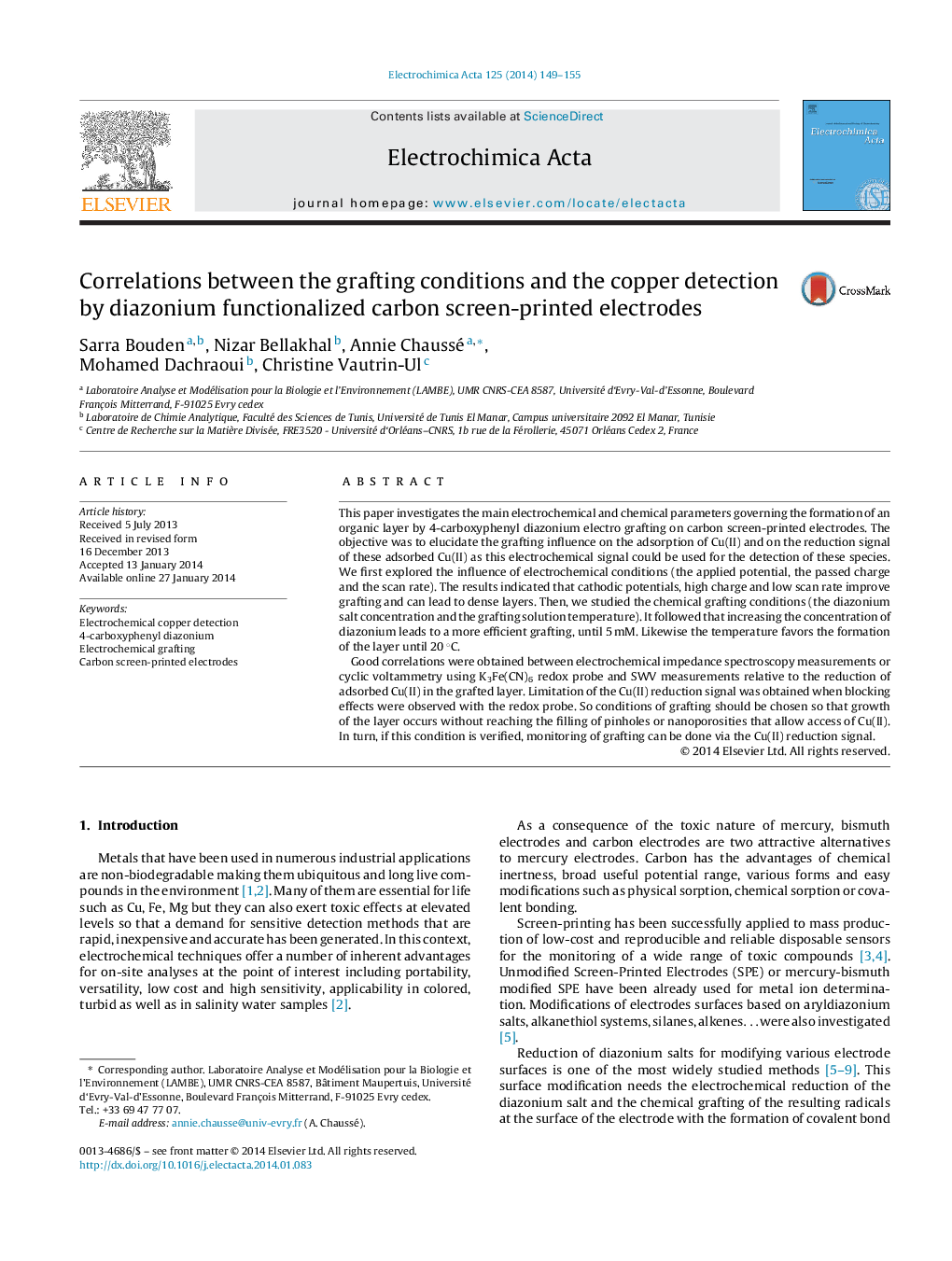| Article ID | Journal | Published Year | Pages | File Type |
|---|---|---|---|---|
| 186208 | Electrochimica Acta | 2014 | 7 Pages |
This paper investigates the main electrochemical and chemical parameters governing the formation of an organic layer by 4-carboxyphenyl diazonium electro grafting on carbon screen-printed electrodes. The objective was to elucidate the grafting influence on the adsorption of Cu(II) and on the reduction signal of these adsorbed Cu(II) as this electrochemical signal could be used for the detection of these species. We first explored the influence of electrochemical conditions (the applied potential, the passed charge and the scan rate). The results indicated that cathodic potentials, high charge and low scan rate improve grafting and can lead to dense layers. Then, we studied the chemical grafting conditions (the diazonium salt concentration and the grafting solution temperature). It followed that increasing the concentration of diazonium leads to a more efficient grafting, until 5 mM. Likewise the temperature favors the formation of the layer until 20 °C.Good correlations were obtained between electrochemical impedance spectroscopy measurements or cyclic voltammetry using K3Fe(CN)6 redox probe and SWV measurements relative to the reduction of adsorbed Cu(II) in the grafted layer. Limitation of the Cu(II) reduction signal was obtained when blocking effects were observed with the redox probe. So conditions of grafting should be chosen so that growth of the layer occurs without reaching the filling of pinholes or nanoporosities that allow access of Cu(II). In turn, if this condition is verified, monitoring of grafting can be done via the Cu(II) reduction signal.
